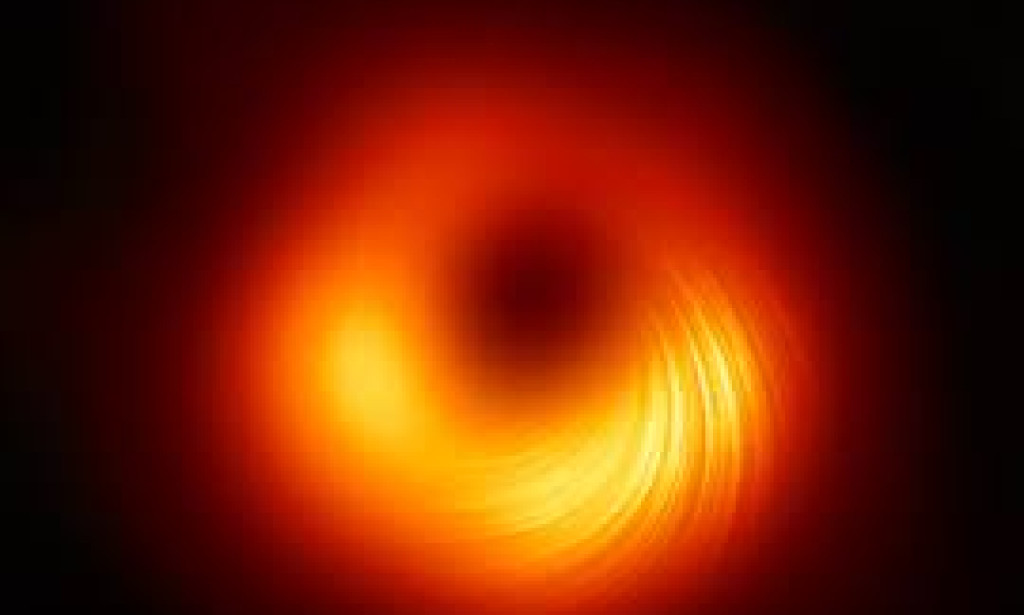In April 2019, the Event Horizon Telescope (EHT) collaboration made history by releasing the first direct image of a black hole's shadow at the center of the giant elliptical galaxy M87. This black hole, known as M87*, has a mass equivalent to 6.5 billion times that of the Sun and is located 55 million light-years away from Earth.
Since then, the EHT collaboration has been working to analyze the data in even greater detail, resulting in new images that reveal more about the black hole's environment. The new images, which were published in March 2021 in The Astrophysical Journal Letters, show a glowing, fluffy ring around the black hole's shadow, as well as a high-speed jet of particles shooting out of the black hole's center.
The fluffy ring around the black hole's shadow is known as the "photon ring." It is formed by light from the surrounding gas and dust that is bent and magnified by the black hole's gravity. The new images show that the photon ring is not a uniform, sharp ring, but rather a series of bright and dark patches that are thought to be caused by turbulence in the gas surrounding the black hole.
The high-speed jet of particles shooting out of the black hole's center was also observed in the original 2019 image. However, the new images show that the jet is not a straight line, but rather a slightly curved structure. This suggests that the jet is being twisted by the strong magnetic fields that are present in the vicinity of the black hole.
The new images also provide additional confirmation of Einstein's theory of general relativity. Specifically, the observed properties of the photon ring are consistent with the predictions of the theory for a black hole of M87*'s mass and spin. This provides further evidence that Einstein's theory accurately describes the behavior of gravity in extreme environments.
Overall, the new images of M87* provide an unprecedented glimpse into the environment around a supermassive black hole. They also demonstrate the power of the EHT collaboration and the remarkable advancements in observational astronomy that have been made in recent years.



You must be logged in to post a comment.